How Supraland's puzzles are different
In this article I'll share some insight on how the puzzles in Supraland are different from those in other puzzle games and how I approach the design process.


In this article I'll share some insight on how the puzzles in Supraland are very much different from those in other puzzle games. For some parts of the article you need to have played the game to fully understand what I'm talking about.
I'll name some other games as examples and in case of negative mentions I hope not to offend anyone. They are all great games but just have different design philosophies appealing to different players.
Is there a puzzle at all and if yes, how many?
Pretty much all puzzle games are separated into levels or the puzzles are conveniently separated from the rest of the world.
If you cut the story telling aspects out of Portal, it's basically just a linear progression of levels.
In Breath of the Wild there are lots of puzzle dungeons. What makes this uninteresting to me is that the game tells you "here is a puzzle and these are the parts of the puzzle". I totally try to avoid this by having the puzzles smoothly integrated into the world and also partly overlapping.
I like the ambiguity that you might not even know that there is a puzzle at all. And once you figured out there is a puzzle, you don't know which elements are part of it. The moment when people realize "oh I can use this too" is great. Like when they try to color the ring yellow but don't realize they can just take one of the many yellow crystal lamps everywhere.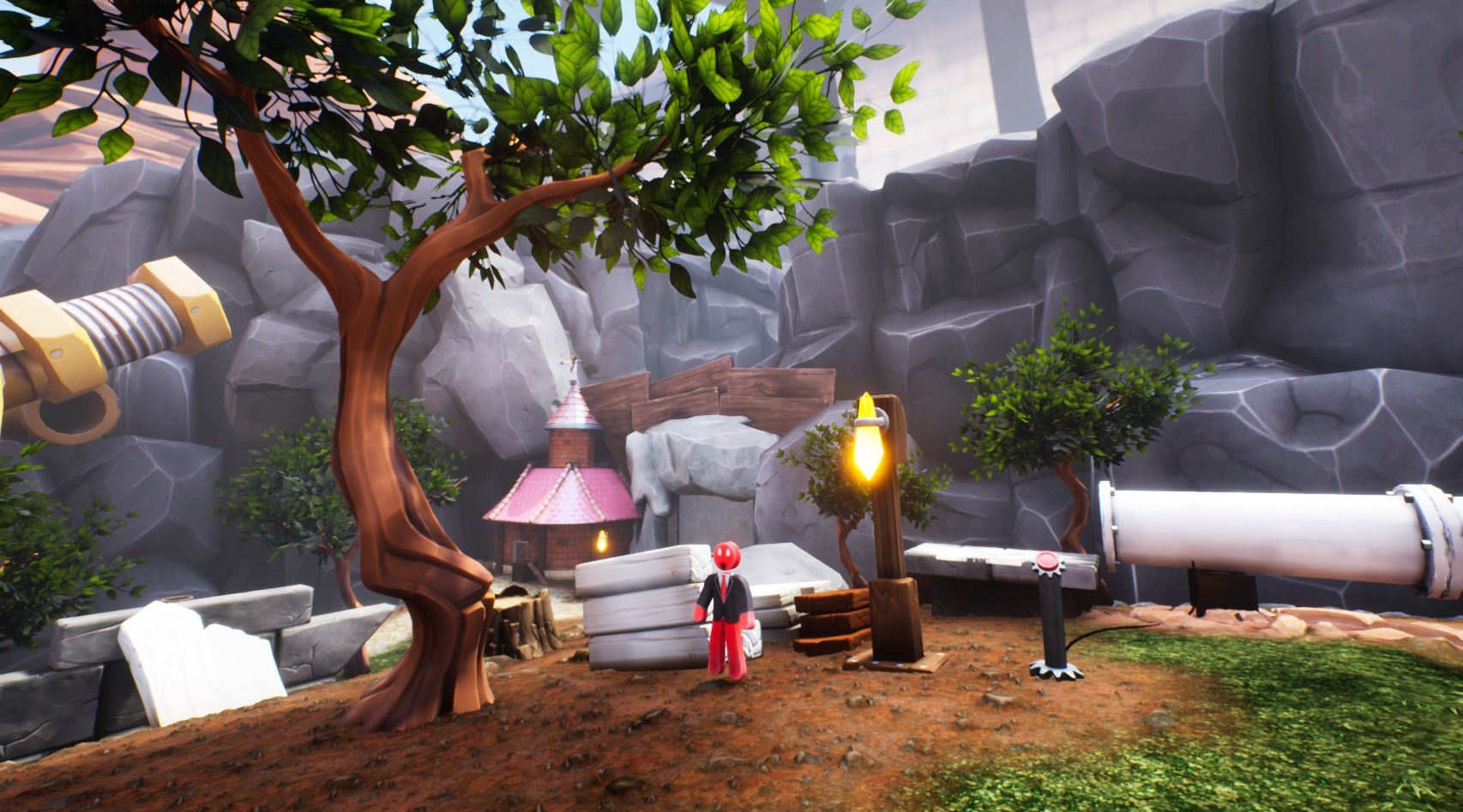
And right after that, they know they need a red keycard. It is left unclear if they just need to find it, because that's what the game suggest. But the moment they realize they can use the same trick from the previous level to "cheat" always gives players a great feeling.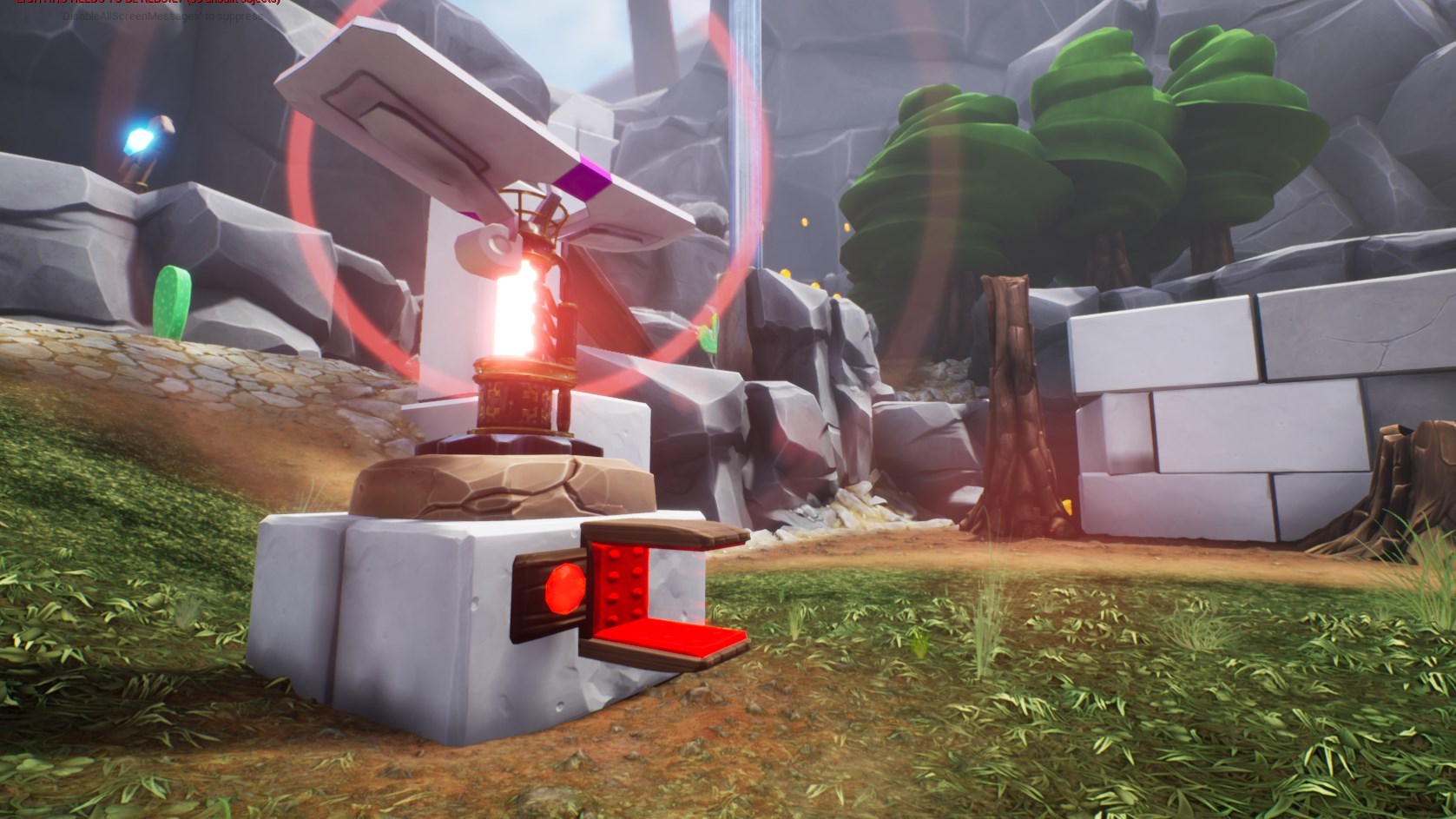
Talos Principle is also separated in levels with clearly defined puzzle elements. But the moments in which it shined for me were, when you combined elements from several levels (because they are in an open world). You could elevate an object from one level into the air and then use it for another one. These unexpected out-of-the-box moments feel fantastic. Mostly because the game does not tell you about it at all so it feels like a real achievement.
Similar thing in Portal 2, when you're in the old decayed facilities where the game introduces the different types of goos. In one section you did beat a "level" but from the next section you could still get a peak at one of the goo pipes from the level before. By placing a portal through that gap you could bring the goo from the previous level to the next. That was fantastic.
Not puzzle related, but another upside of an open structure instead of separated levels is that you can "live" in that world instead of it being dead levels. In The Witness and Talos Principle I enjoyed the places but I just could not feel them enough because you were the only being in there. I don't know if it's just me. So I wanted an open world like that but with more life, hence there are NPCs everywhere bringing the world to life.
Skipping steps and hiding hints
Everyone is smart enough to figure stuff out. I wish more games treated people as intelligent beings, that would make games much more fun again.
I'm intentionally skipping steps in the tutorialisation of puzzle mechanics.
If a game explains everything to you, there is never really a moment of pride of having figured something out. The AAA problem of being afraid people might get stuck. The downside being that you get channeled through the game without ever achieving anything.
They explain step 1, then step 2, then step 3. You don't figure out anything by yourself really.
I usually give you a strong hint for step 1 but then skip step 2 entirely. Then it feels great when you make it to step 3 by yourself. And on top of that there should be a secret twist that lets you go from step 3 to step D; some out of box thinking addition.
I'm trying to hint as little as possible but just as much as needed. Knowing what's needed comes from watching lots of people play the game. Then I know where they need just a tiny bit more support.
It's best done in a way that the player does not even realize they were hinted at all, maybe by forcing you to look at something that subconsciously plants an information in your mind. If you don't know you got hinted, you still get to have the feeling of "I figured it out all by myself".
For example this puzzle where you need to stop the moving platform in the middle under the wall by placing your cube in the way. People did not know this mechanism existed, so I needed to help more.
In the section before that, by the pumpkin farm, I added those large tree stumps with cubes on top of them. You can let a platform travel to you, but it will get stuck on those cubes that you have to shoot off first. This is supposed to subconsciously teach you that this is the effect the cube has on the platform.
After that was added, people would solve the following puzzle much more easily. They will feel like they did it all by themselves.
And that's really the goal of all of the puzzles: you should feel really clever solving them.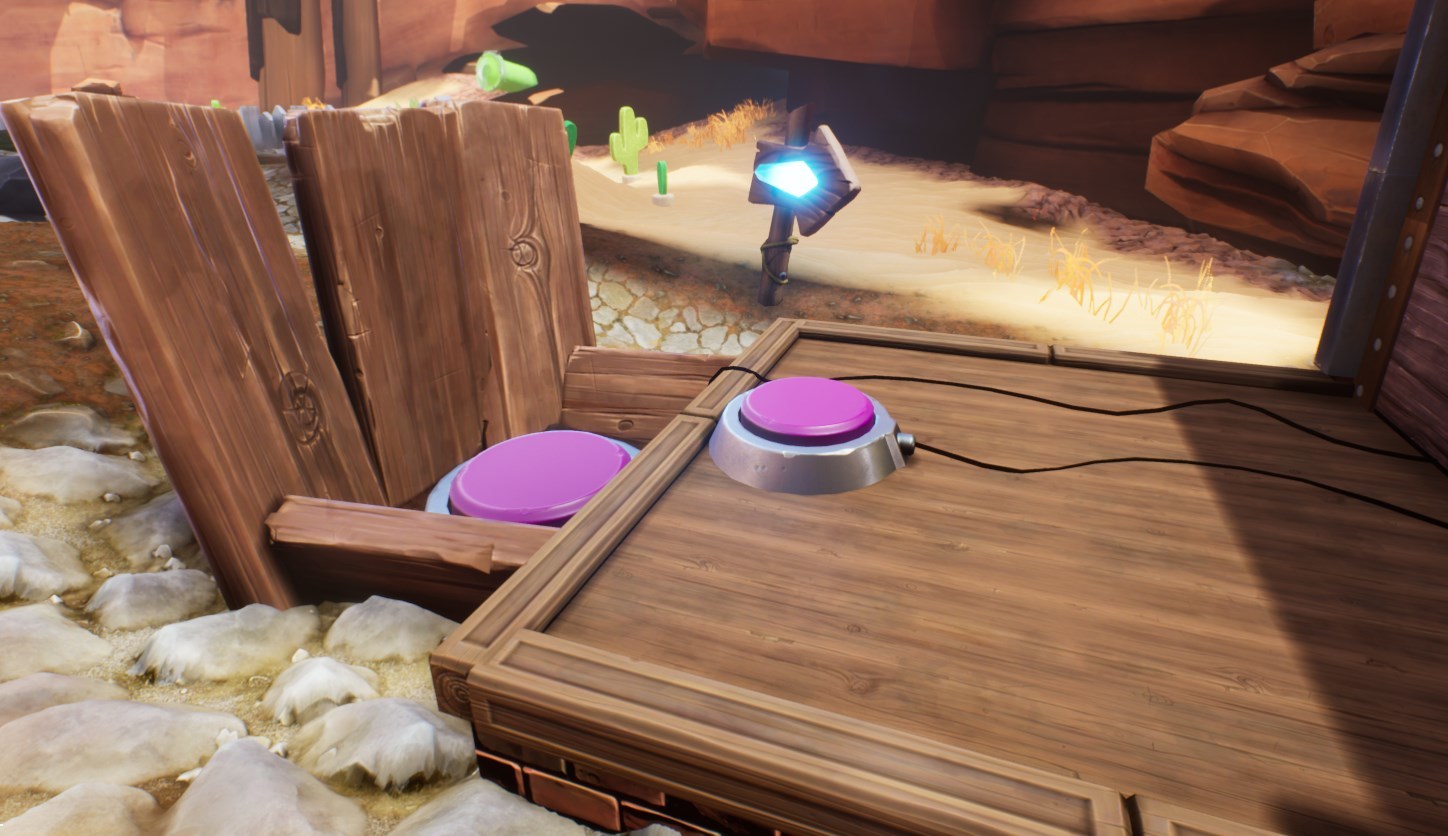
Shooting cubes would also subconsciously give you a better idea for this puzzle, where you need to shoot a cube from the top to the bottom button. Before the hints players would not know the blaster had an effect on the cube at all.
Not progressively getting more complex
Maybe you're the type that likes to grind through super hard puzzles. Not me. I like figuring out interesting ideas. Where games lose me is when they introduce a mechanism and then just keep making that mechanism progressively more complex and convoluted. I'm thinking of Talos Principle and Baba Is You. Baba overwhelms you with incredibly creative ideas at first but then it quickly turned into extremely complex and hard to crack nuts that were not really that creatively interesting to me anymore but just very complicated.
Portal 1/2 did it just right in my opinion. They introduce new mechanics and used them just a couple of times, and just before they could get boring they did something new. You never got tired of anything.
The Supraland puzzles are always based on one very simple idea and you just have to figure that one out. It might seem complex at first glance sometimes, but apart from one case (the one where you create the chain reaction in front of the blue castle) they are essentially very simple.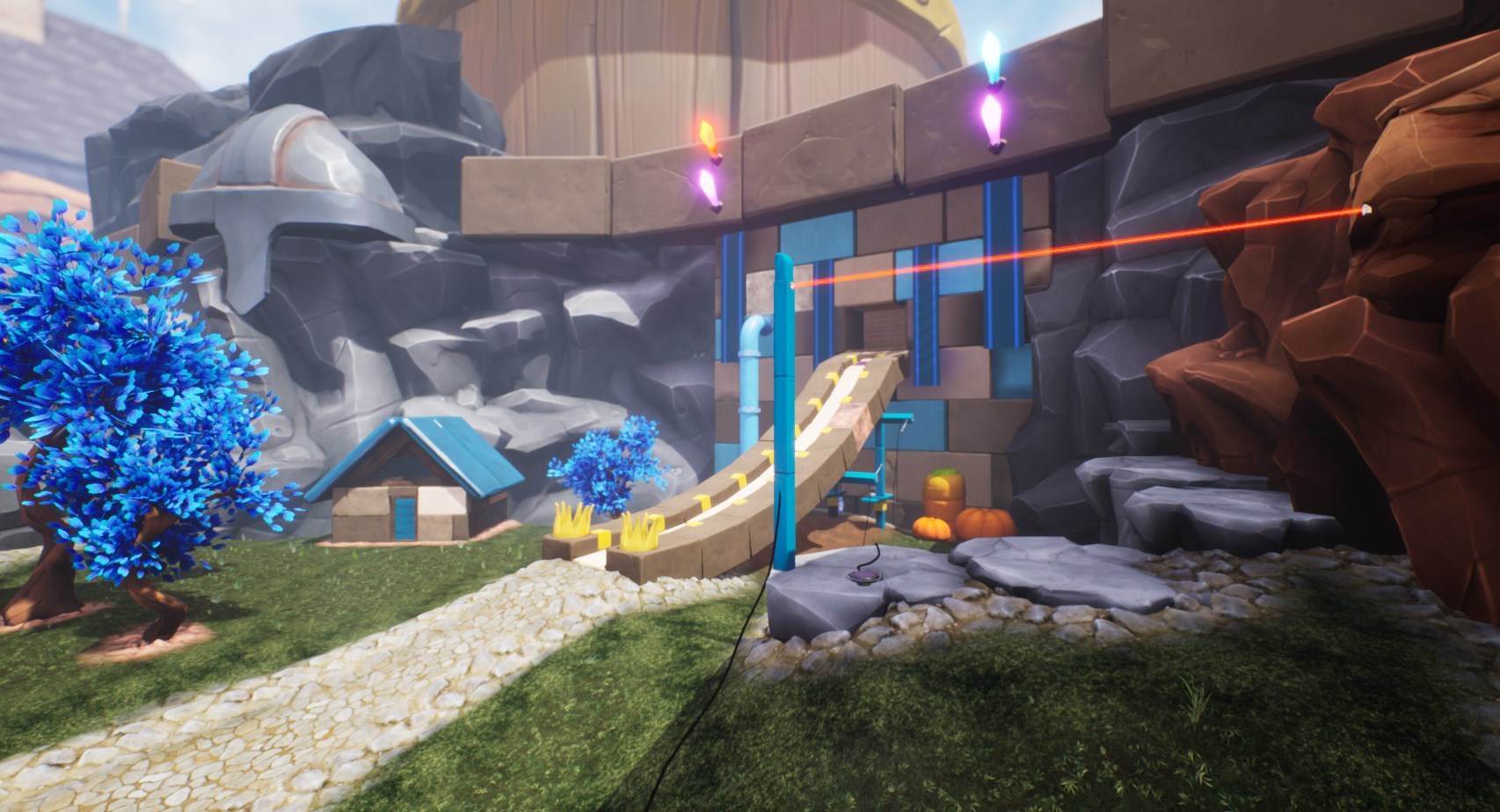
In Talos Principle you were still redirecting lasers after 10 hours, just as in the beginning, just in more convoluted ways. It felt like the designers thought of yet another way how to change the core mechanism a tiny little bit and made yet another level for it. It makes sense, but my approach would be to cut 75% of these and just keep in the ones that are significantly different from each other.
Idea over Execution
The most fun moment in Supraland's puzzle solving is precisely when the light bulb goes on in your head and you get the idea! This also made it hard to make a cool trailer, because the best moments are in your head and not something you can watch on the screen, so it's hard to pick interesting footage.
Getting the idea is the great moment, not so much executing the puzzle. Therefore I try to always make sure the execution is very painless and quick once you got the right idea.
I painfully learned this in Toki Tori 2. While being a very interesting game, a metroidvania where you get more knowledge instead of actual abilities, I spent so much time trying to solve puzzles long after I knew how to do them. It was often such a long process and if you made a little mistake you had to do it all over again.
I tweaked tons of puzzles to make their handling easy. You might have noticed all those points where the cube snaps into a perfect position. Previously it would be pretty messy and you would need to replace it 3-4 times until it sits right. The same was done in Portal where the portals would snap into perfect positions on several panels.
If you remember the puzzle in this image, it's one of the cases where I failed. I still love the idea, magnetizing along the jumping metal balls, but execution is just so clunky, you'll hate having to repeat it 10 times. In the earlier version there were fire spewing pipes under you, so you would also die if you failed. I at least made that friendlier.
Multiple ways to solve puzzles
Well, let's be honest. I only ever have one way of solving something in mind but it's not so easy to contain all the abilities you're given. I know you all enjoy glitching puzzles... and that's what it is. It is the result of imperfect level design.
The problem I have is, that I cannot reproduce this fun aspect in a reliable fashion. If I get too good at the puzzle layouts, these happy accidents will disappear. I'm not entirely sure how to handle this in the future. But it will probably happen time and again, and if it's no big problem I'll just keep these glitches in.
What I do try to do as often as possible is that every contraption in the game can be used for multiple goals, but every goal has just one intended solution.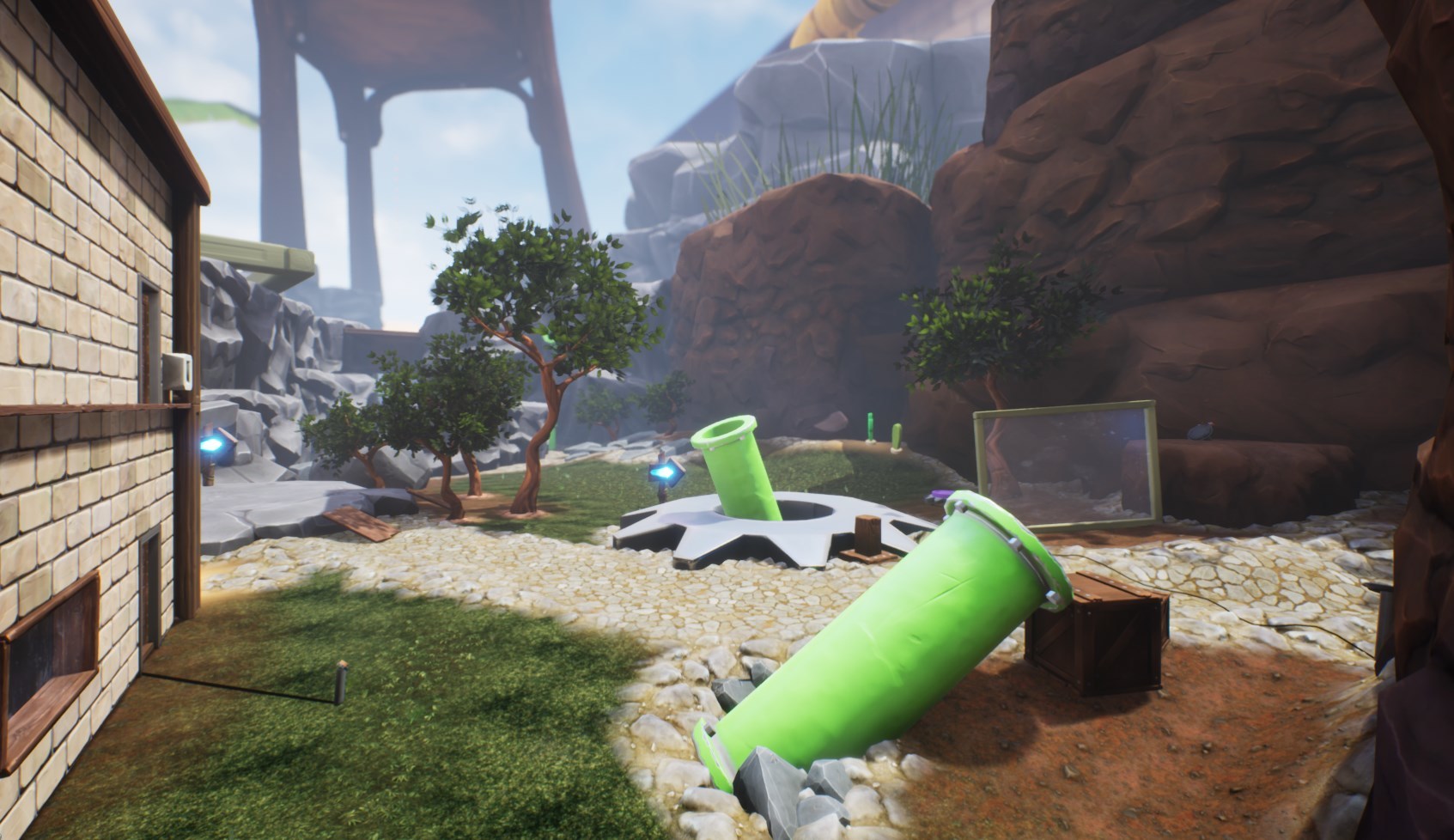
You can get to so many secret areas with just this one thing here!
The design process of the abilities
The abilities, the players gets step by step, are the backbone of Supraland. It is the first thing designed before anything else.
The challenge is,
a) to have abilities that feel unique (not the usual ones that are in literally every metroidvania out there),
b) to have many different uses for every ability (instead of just one use case that you keep repeating; which turns abilities into nothing more but a fancy key; like a red shot that destroys red blocks... meh)
c) and to have lots of interactions between the different systems (I loved how you could for example attach the beam to your cube, shoot with the blaster through the beam to change the color of your projectile and use that to turn your translocator from green to purple).
d) When you get a new ability, the world should be recontextualized. Like when you got the floating buckle, and now everywhere you see metal things that you didn't see before. I don't like it too much, when you see lots of things that you will be able to use later and you even have a precise guess, how you will be able to use it. Then it's just annoying to not be able to do it right now.
In general I try to get away from abilities that just add verticality to your movement in different ways. It's a bit boring to constantly just get to a higher place or to open doors. There are so many more interesting ways for the player to accomplish certain goals. Like when I let you make a guy appear holy by faking a halo and holding it over his head. You know, there are lots of ways to get you to think in more creative ways and I think that's what makes Supraland fun (and of course finding chests out of bounds). Meanwhile the puzzle genre mostly seemed to just settled for putting some sort of cube onto a button to open a door.... or to redirect a laser into a receiver to power something... I hope we're soon done with this. There is nothing interesting about it anymore.
- David Münnich
Read more about:
BlogsAbout the Author(s)
You May Also Like













